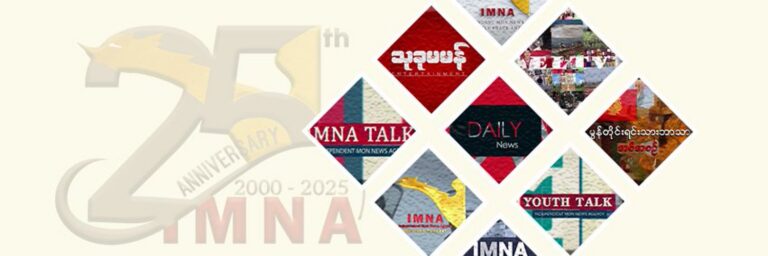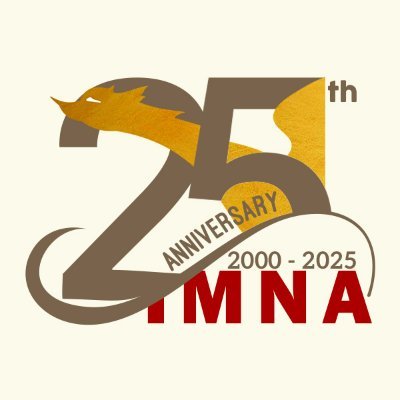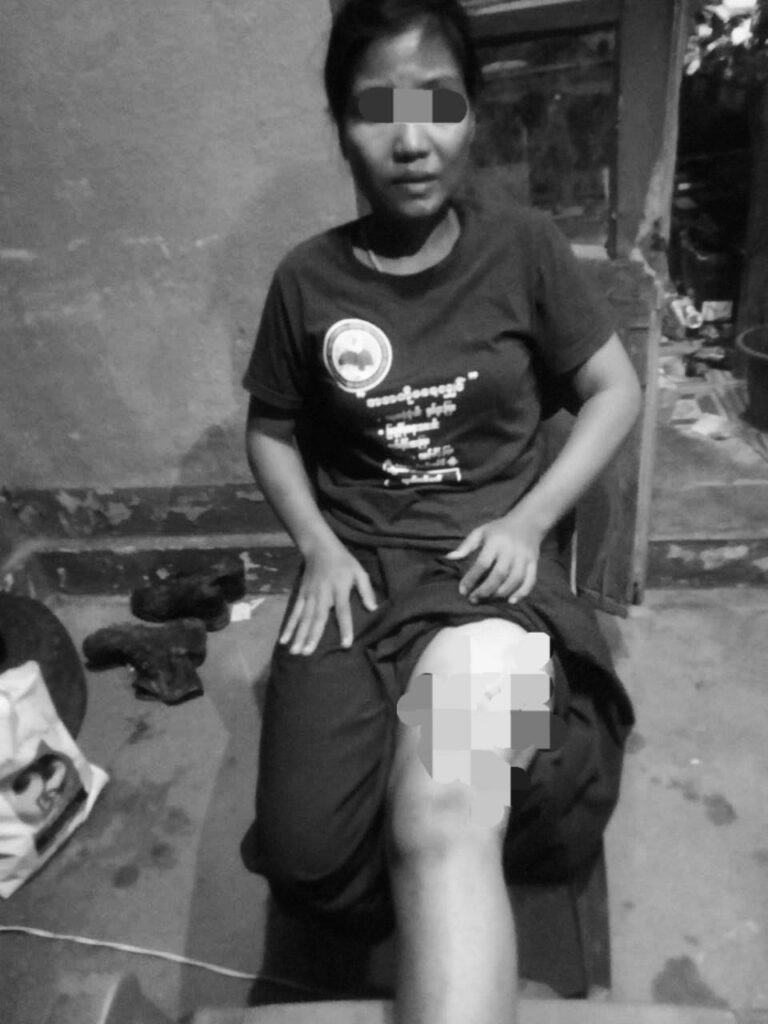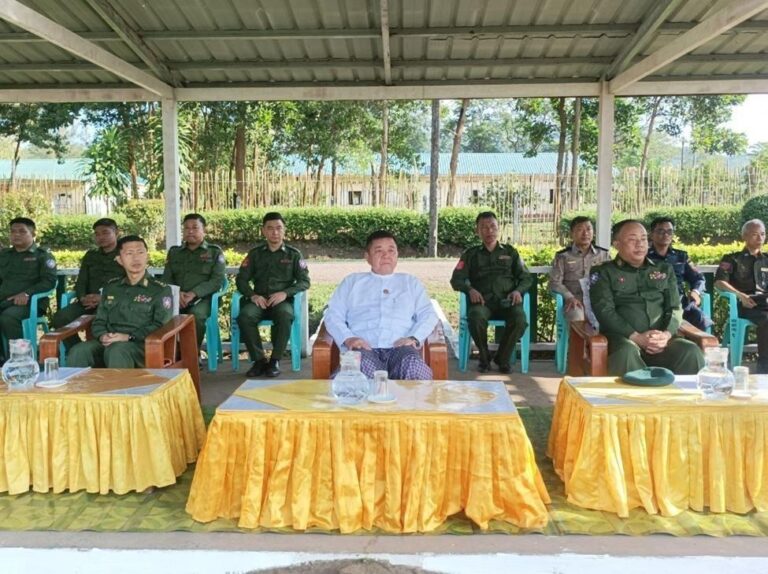Nai Aue Mon
When I look back at my own journey, I always return to one place: a small room on the lower floor of a two-story wooden house, where my curiosity about news first came alive. That room belonged to ‘Guiding Star’ or Snong Tine, the Mon-language newspaper that laid the foundation for independent Mon media. It was there, in that simple space, that I began as an apprentice, learning step by step.
From that beginning, the work grew into what we now know as ‘the Independent Mon News Agency (IMNA)‘ in the year 2000, and it quickly became known among Mon, Burmese, and international audiences. Through IMNA, our once-closed Mon community began to open a window to the wider world.
I joined this newsroom when I was very young. At that time, I never saw myself as a “journalist” or an “activist” like the roles I hold today. I was just a young person eager to learn, to serve our people, and to tell the truth about what was happening around us.
IMNA was my first real school. There were no formal classrooms, no big budgets, and no fancy equipment. Everything was hands-on. I learned how to report, how to interview, how to write clearly, and how to present for Mon-language radio, together with my friend Nai Chan Mon, who generously shared many computer and broadcasting skills with me. I even learned how to code for the website and use basic digital tools.
More than technical skills, IMNA taught me discipline, accuracy, and respect for the truth. These values have stayed with me ever since.
Life as a young reporter at IMNA was not easy. We worked with limited equipment, unstable electricity, and constant security risks. We were always careful about what we carried, who we met, and how we communicated. But our motivation was strong. We believed deeply that our people needed a voice. Every story felt urgent and meaningful because it came from real suffering and real hope.
It was through this early work that IMNA prepared me for human rights documentation. Reporting trained my eyes to observe carefully. Interviewing taught me to listen to people’s pain, to give space to their emotions, and to be responsible with their stories. Over time, documenting abuses and amplifying survivor voices became my life’s work. IMNA showed me that truth is not just information; it is a form of protection and dignity.
For the Mon community, IMNA has always been more than just a media outlet. It is a living memory of our struggles and our resilience. For 25 years, IMNA has acted as a bridge between ordinary people and the outside world. It has told stories that others ignored and protected the truth during years when speaking honestly could lead to arrest or exile. When there was silence in the mainstream media, IMNA was there, reporting from the border, from remote villages, and from the hearts of our communities.
The environment for ethnic media has never been easy, but the coup made everything more dangerous. Even before the coup, there was censorship, surveillance, and pressure. After the coup, things became much worse. Journalists were arrested, forced into hiding, or pushed into exile. Many media houses were shut down or declared illegal. Yet, ethnic media like IMNA continued working because communities depended on them, not only for news but for safety and guidance.
Today, ethnic media are facing a new kind of challenge as well. Social media platforms like Facebook, X, and Telegram spread information faster than ever before, but not always truthfully. Fake news and propaganda move quickly, while carefully verified stories take more time. People are flooded with rumors, edited photos, and emotional posts. It becomes harder for them to know what is real and what is manipulation.
In this environment, the work of IMNA and other ethnic media becomes even more important, but also harder to sustain. Ethical media take time to check facts, verify sources, and protect the dignity of survivors. They do not simply repeat what they hear; they investigate. This makes them trustworthy, but it also means more work with fewer resources. Donor cuts to independent and exiled media have added even more pressure. Many outlets are struggling to survive.
I believe that the way forward for IMNA and other ethnic media lies in collaboration, not competition. Sharing resources, co-producing stories, strengthening digital security, and building small community-supported models can help keep the work alive. Donors, too, must understand that supporting ethnic media is not a luxury. It is essential for civilian protection, for accountability, and for the future of democracy in Burma/Myanmar.
When people ask if the media has covered human rights violations “enough,” my answer is simple: journalists and media houses have done so much, often at great personal risk. Without them, the world would know almost nothing about what is happening in our country. But the scale of violations is enormous. Some stories are still buried, especially in remote ethnic areas. Ethnic media continue to fill those gaps, but they need sustained support to keep going.
To young Mon journalists today, I would say this: stay committed. Learn new tools, stay curious, and keep your ethics strong. The path is not easy and sometimes it will feel lonely, but your work can save lives. Every accurate report, every honest interview, every verified photograph matters. It builds a record that no regime can fully erase.
As we mark IMNA’s 25th anniversary, I also want to offer a personal tribute. I want to thank Nai Kasauh Mon, the founder of IMNA, Nai Banya Hongsa, who shared journalism skills with me back in 2001, and Nai Chan Mon, who taught me so much about multimedia, along with my colleagues, many of whom are still inside Burma. They gave young people like me our first real chance to learn journalism, to understand our responsibility to society, and to grow into who we are today. Their vision built not only a media agency, but a whole generation of Mon journalists, activists, and human rights defenders.
Without their leadership and guidance, I would not be where I am now, working with HURFOM and continuing to document the truth of our people’s lives. For that, I am deeply grateful. Thank you, Nai Kasauh Mon, for shaping our path and for building this home of truth for the Mon people.
As we celebrate IMNA’s 25-year journey, I want to honor everyone who has kept this institution alive: reporters, editors, translators, technicians, volunteers, and the communities who have trusted IMNA with their stories. IMNA’s story is not only about journalism. It is about resilience, dignity, and the power of a small, committed team to stand against fear and silence.
In a time when our country is still in darkness, IMNA continues to be a light. My hope is that the next 25 years will be even stronger, with more courage, more solidarity, and a shared commitment to building a peaceful, federal democratic future, where the rights and voices of all our people are respected.
Nai Aue Mon
Program Director,
Human Rights Foundation of Monland





